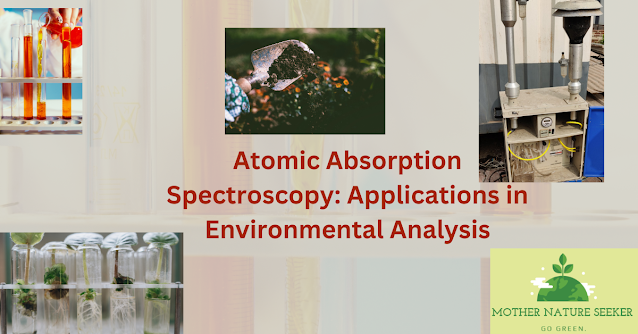Atomic Absorption Spectroscopy: Applications in Environmental Analysis. This article discusses the use of atomic absorption spectroscopy in environmental analysis. Environmental analysis is an important discipline dealing with the identification and quantification of contaminants in the environment. This section discusses the use of AAS in food, water, air, and soil analysis.
Atomic Absorption Spectroscopy: Applications in Environmental Analysis
Water Analysis
Atomic Absorption
Spectroscopy (AAS) is widely used in water sample analysis.
AAS may be used to determine the concentration of different elements in
water samples, such as lead, cadmium, and mercury. AAS is a
highly sensitive technology capable of detecting traces of these metals in
water samples.
Soil Analysis
Atomic Absorption Spectroscopy (AAS) is also used for analyzing soil samples. AAS may be used to determine the concentration of several elements in soil samples, such as arsenic, chromium, and nickel. AAS is a highly sensitive technology capable of detecting even trace levels of these elements in soil samples.
Air Analysis
Air samples are also examined via Atomic Absorption Spectroscopy (AAS). AAS may be used to determine the concentration of different elements in air samples, such as lead, cadmium, and mercury. AAS is a highly sensitive technology capable of detecting traces of these elements in air samples.
Food Analysis
Atomic Absorption
Spectroscopy (AAS) is also utilized in food analysis.
AAS may be used to evaluate the concentration of various elements in food
samples, such as arsenic, cadmium, and lead. AAS is a
highly sensitive technology capable of detecting even trace levels of these
elements in food samples.
Gratitude for perusing and following for more knowledgeable data.
Learn about Atomic Absorption Spectroscopy in 5 minutes
Protecting the Planet: Key Environmental Issues and What you Can Do






0 Comentaris